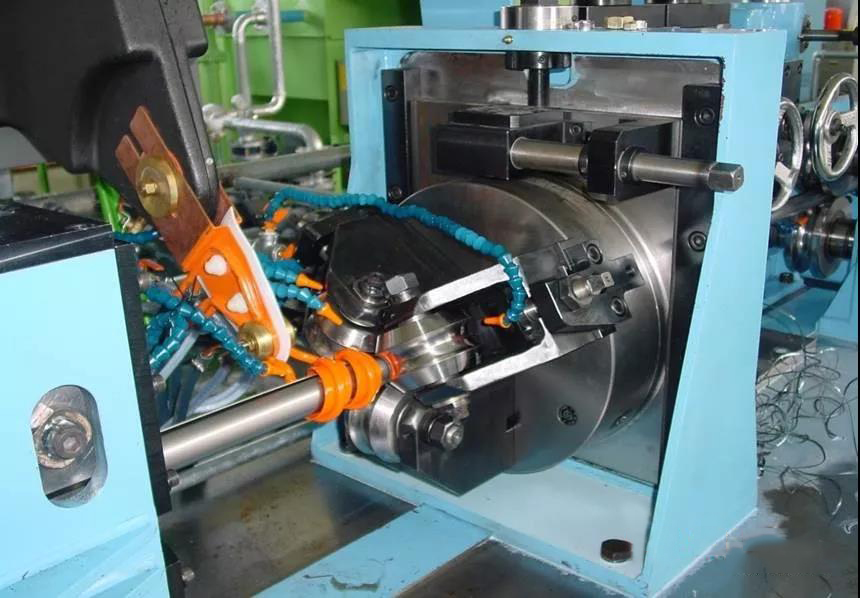Correct selection of induction coils for used high frequency welded pipe equipment
- Sort:Information
- Auth:
- Source:
- Release time:2023-04-26 11:30
- Pvs:
【概要描述】For used high frequency welded pipe equipment in order to obtain the maximum welding efficiency, the correct selection of the induction coil is very important.
Correct selection of induction coils for used high frequency welded pipe equipment
【概要描述】For used high frequency welded pipe equipment in order to obtain the maximum welding efficiency, the correct selection of the induction coil is very important.
- Sort:Information
- Auth:
- Source:
- Release time:2023-04-26 11:30
- Pvs:
For used high frequency welded pipe equipment in order to obtain the maximum welding efficiency, the correct selection of the induction coil is very important.
Used high frequency welded pipe equipment to make high-frequency welded pipe production process parameters include welding speed (unit speed), welding temperature (high-frequency power), welding current (high-frequency frequency), extrusion force (mold design and material), opening V Angle, the size and position of the inductor (material of the coil, winding direction, position) and impedance (magnetic rod).

The distance A between the coil and the squeeze roll depends on the design of the rolling mill and the diameter of the squeeze roll. The smaller A is, the better, and it is best not to exceed the pipe diameter, as shown in the figure above.
The inner diameter of the coil and its length should be equal and approximately 20% larger than the pipe diameter
High frequency (stable and continuous) power, welding speed, welding extrusion force and opening V angle are the most important process parameters, which must be matched reasonably, otherwise it will affect the welding quality.
Adjust the production speed of used high frequency welded pipe equipment. If the speed is too high or too low, it will cause low-temperature welding impermeability and high-temperature overburning, and the weld will crack after being flattened.

When the squeezing force is insufficient, the edge metals to be welded cannot be completely pressed together, the impurities remaining in the weld are not easily discharged, and the strength is reduced. When the extrusion force is too large, the metal flow angle increases, the residue is easily discharged, the heat-affected zone becomes narrow, and the welding quality is improved. However, if the pressure is too high, it will cause larger sparks and splashes, causing the molten oxide and part of the metal plastic layer to be squeezed out, and the weld will become thinner after being scratched, thereby reducing the strength of the weld. Proper extrusion force is an important prerequisite to ensure welding quality.
The opening angle is too large, which reduces the high-frequency proximity effect, increases the power loss, and reduces the welding temperature. If the welding speed does not change, the welding will be impenetrable; if the opening angle is too small, the welding current will be unstable, and small splashes will occur at the squeezing point.
The induction coil is an important part of the production of high-frequency welded pipes. The gap between it and the pipe blank and the width of the opening have a great influence on the welding quality.
The gap between the induction coil and the tube blank is too large, resulting in a sharp drop in inductance efficiency;
If the gap between the induction coil and the tube blank is too small, it is easy to generate electric discharge between the coil and the tube blank, and it is also easy to be damaged by the moving tube blank.
If the width of the induction coil is too large, the welding temperature of the butt edge of the tube blank will be reduced. If the welding speed is fast, false welding and cracking are likely to occur after straightening.
Part of the content of this site comes from the Internet. This site only provides information storage. The copyright belongs to the original author. It does not bear the relevant legal responsibility and does not represent the views and positions of this site. Please contact and delete it if there is any infringement.
More News

Time of issue : 2023-10-31

Time of issue : 2023-10-28

Time of issue : 2023-10-25

Time of issue : 2023-10-22
Wechat: 13392281699
Email: zty@usedpipemill.com
Company address:No. A99, East Lecong Avenue, Lecong Town, Foshan City, Guangdong Province
Recommendation
Online Inquiry
LINK
Contact Us
Tel (wechat): 13336487288
Wechat:+86 13336487288
WhatsApp:+86 13336487288
Email: zty@usedpipemill.com
Address: No. A99, Lecong Avenue East, Lecong Town, Foshan City, Guangdong Province










